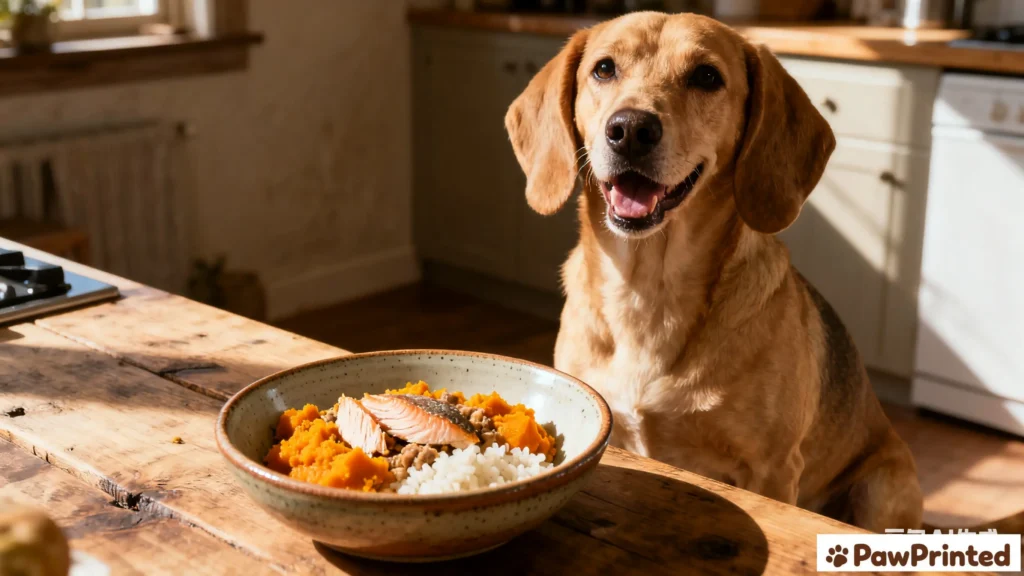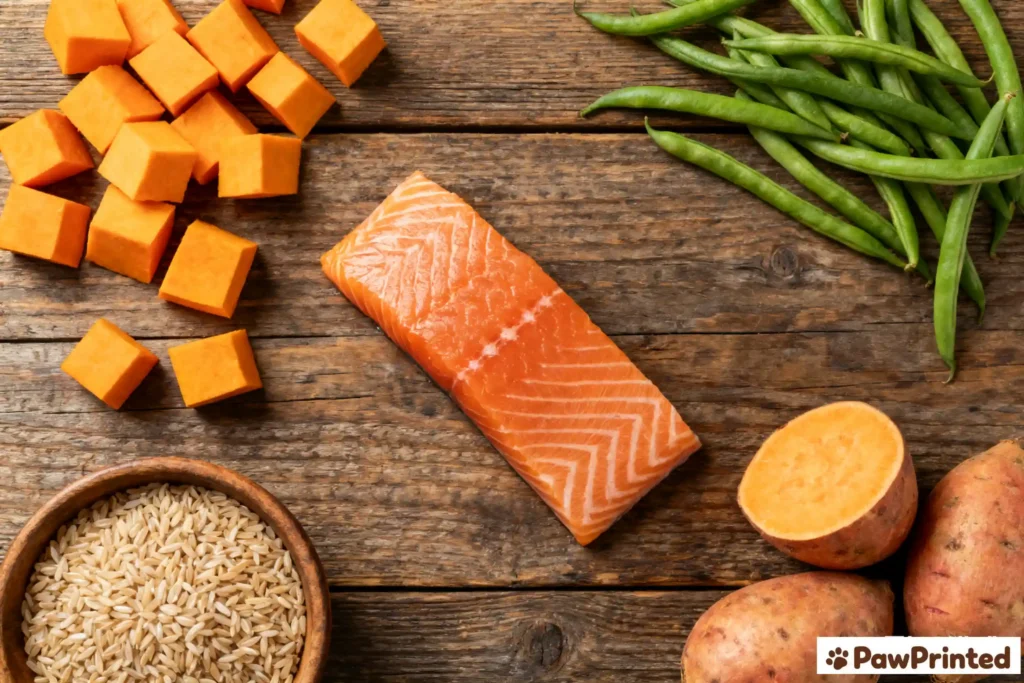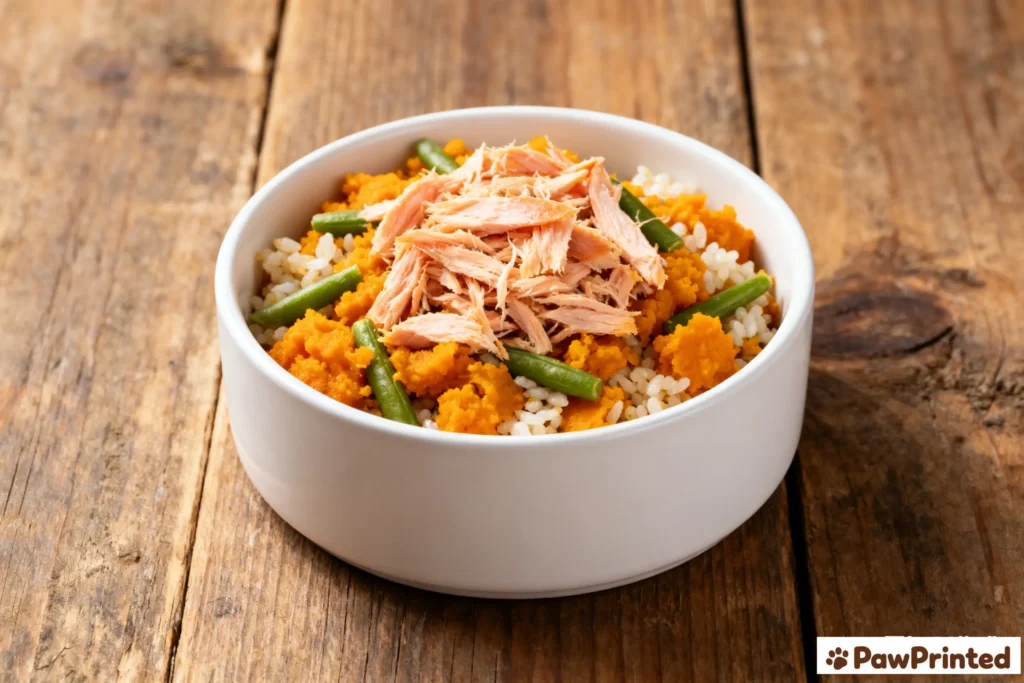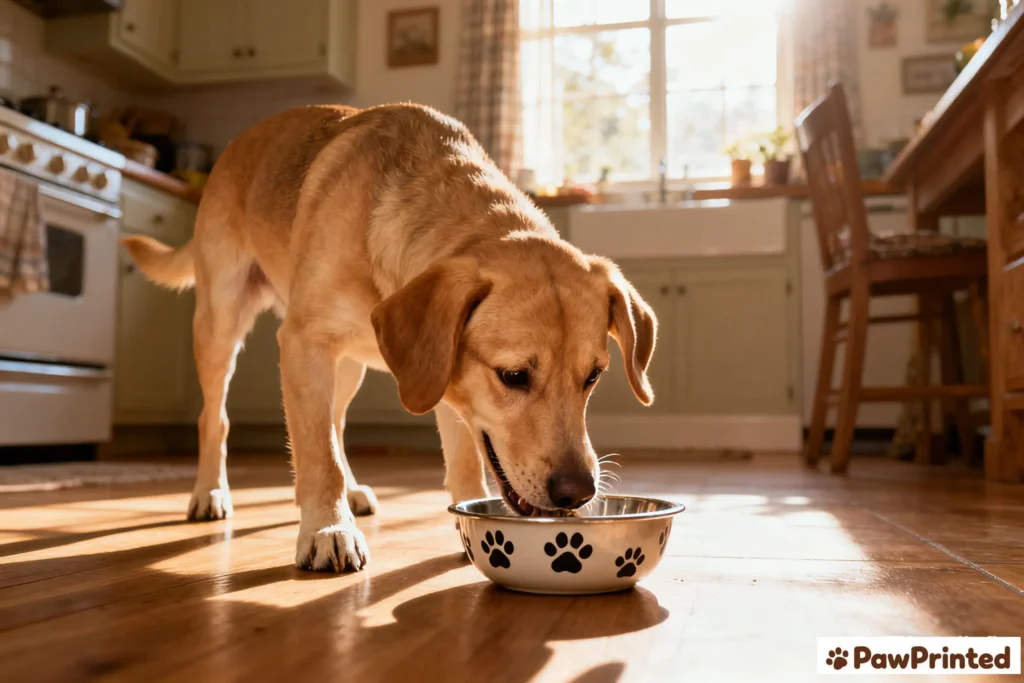Some dogs thrive on any decent diet. Others—like our floppy-eared Ethan—tell you exactly when a formula isn’t right: loose stools, itchy skin, low energy. With our vet, we built a calm system: match food to the health need, measure by calories, then change one variable at a time. This hub gathers what actually worked for families we help, so you can jump straight to the plan that fits your dog.

Red flag — call your vet: blood in stool, persistent vomiting >24h, repeated collapse/fainting, bloating with a tight abdomen, dramatic weight loss, or sudden behavior change around food. These can be emergencies—don’t wait.
How to Use This Guide
Pick the section that matches your dog’s current need, follow the key diet patterns, and use our linked guides for full product picks and routines. Keep the rest of your dog’s life steady for 7–10 days (same treats, same schedule) so you can truly see what the food change is doing.

By Health Need (Start Here)
Food Allergies & Intolerances
What helps: single/novel proteins, clean carb, minimal formulas. Change one input at a time; log itch scores weekly.
Senior Dogs (Aging Support)
What helps: sensible calories, joint nutrients (glucosamine/chondroitin), and digestibility that keeps stools steady.
Gas & Bloating
What helps: fiber balance, probiotic support, slow-feed bowls, and a predictable routine. Rule out gulping and table scraps.
Sensitive Skin & Coat
What helps: Omega-3s (fish/salmon), vitamin E, tidy ingredient lists. Track itch days and coat shine across 3–4 weeks.
How to Change Foods Safely
Use a 7-day transition (or longer for sensitive pups). Measure calories, not scoops; keep treats under 10% of total.

Ingredient-Based Shortcuts (Build a Gentle Bowl)
If labels overwhelm you, start with ingredients. Pair a single protein with a simple carb and add steady fiber. Our ingredient hub shows how we mix and match without chaos.

Quick Comparison (Condition → Diet Pattern)
| Condition | Diet Pattern (Why It Helps) | Where to Start |
|---|---|---|
| Sensitive stomach | Limited extras, steady fiber, digestible proteins | Sensitive Stomach Hub |
| Allergies/itch | Single/novel protein, clean carb, avoid common triggers | Allergies Hub |
| Senior support | Controlled calories, joint nutrients, easy-to-digest | Senior Hub |
| Gas & bloating | Fiber balance, probiotics, slower eating | Gas & Bloating Guide |
| Sensitive skin/coat | Omega-3s, vitamin E, tidy ingredient list | Sensitive Skin Guide |

Our Simple Routine (3–5 Steps)
Step 1: Pick the guide that matches the need above and choose one base formula. Measure by calories, not just scoops.
Step 2: Run a 7-day transition. Keep treats <10%. For sensitive pups, slow to 10–14 days. See our transition plan.
Step 3: Track weight, stools, itch days, and energy each week. Change one variable at a time.
Step 4: If progress stalls, review a simpler ingredient path or a limited ingredient plan. Browse ingredient-based framework.
FAQ
No. Many healthy dogs do well on balanced, non-specialty formulas. Choose health-specific food when you’re solving a real problem (e.g., chronic soft stools, itch, joint stiffness). Start with our Sensitive Stomach Hub or Allergies Hub if those are your top concerns.
Digestive changes often show within 7–10 days; skin and coat may take 3–4 weeks. Keep everything else steady and use our transition guide to avoid confounding the results.
Yes—just measure calories carefully and introduce changes slowly. Consider a simple limited-ingredient add-on (e.g., turkey + pumpkin). See our ingredient-based hub for safe pairings.
Not automatically. Many dogs react to proteins rather than grains. Grain-free can help some pups, but start with single/novel proteins and clean carbs. Learn more in our Grain-Free Guide and Allergies Hub.
Shift to a senior formula with controlled calories and joint support, then re-measure portions by total daily calories. Walks help, but feeding precision matters most. See the Senior Dog Food Hub.
Note: If you don’t want to cook or experiment, pick one condition-matched dry base and keep it steady for two weeks before judging results. Predictability is the real magic.
Follow PawPrinted on Pinterest
We post step-by-step routines, ingredient swaps, and calm transition plans.

